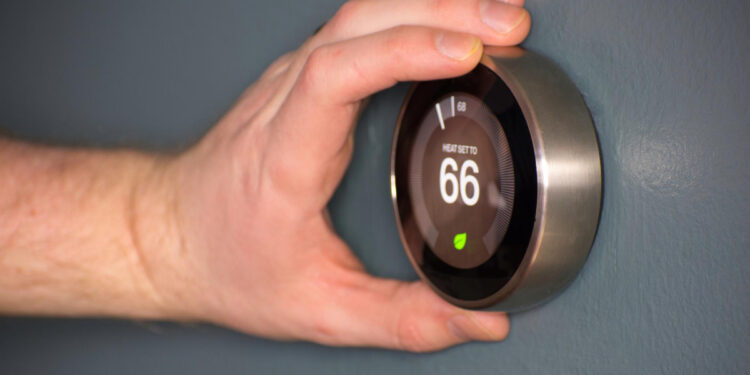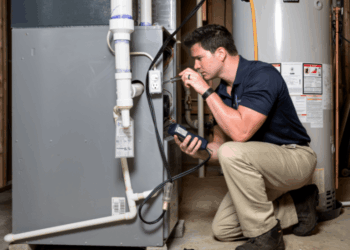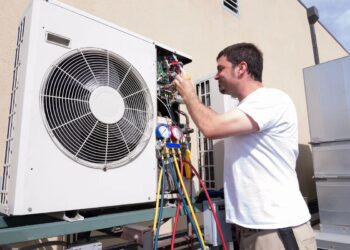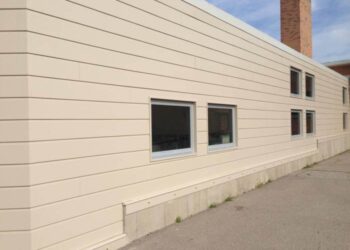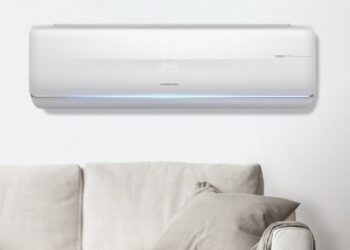Smart Thermostats and Their Role in AC Efficiency have revolutionized the way we control our air conditioning systems. This article delves into the importance of these devices, the technology behind them, their environmental impact, and the user experience they offer.
Let's explore how smart thermostats are shaping the future of AC efficiency.
In the following sections, we will delve into the key aspects of smart thermostats, shedding light on their benefits and the impact they have on energy consumption and environmental sustainability.
Importance of Smart Thermostats
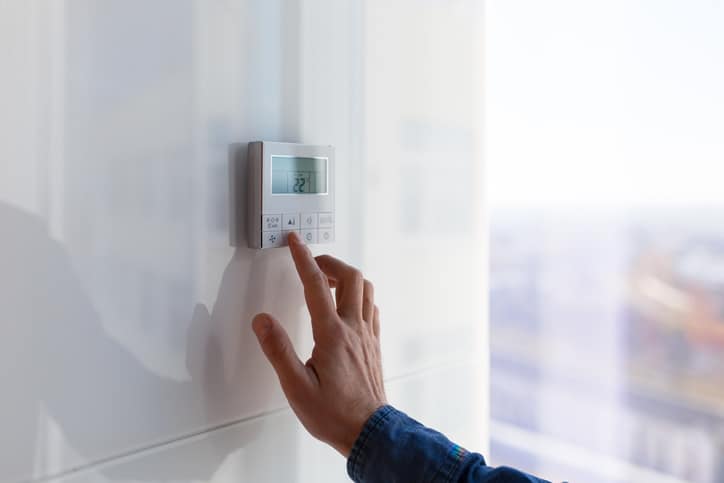
Smart thermostats play a crucial role in regulating AC efficiency by providing advanced features that help optimize energy usage. These devices contribute significantly to energy savings and overall comfort in a household or commercial setting.
Features of Smart Thermostats
- Programmable Schedules: Smart thermostats allow users to create customized schedules based on their daily routines, ensuring the AC runs only when needed.
- Remote Access: With smart thermostats, users can adjust the temperature settings from anywhere using a smartphone or tablet, leading to better energy management.
- Learning Capabilities: Some smart thermostats can learn user preferences and adjust settings automatically, optimizing energy efficiency over time.
- Geofencing Technology: This feature detects when occupants leave or return home, adjusting the temperature accordingly to avoid wasting energy when no one is present.
Technology Behind Smart Thermostats
Smart thermostats utilize advanced technology to optimize the performance of air conditioning systems. These innovative devices are equipped with sensors, connectivity options, and learning algorithms that work together to enhance efficiency and user experience.
Utilization of Sensors
Smart thermostats are equipped with sensors that can detect factors such as temperature, humidity, occupancy, and ambient light levels. By continuously monitoring these variables, the thermostat can make real-time adjustments to the cooling settings to ensure optimal comfort while minimizing energy consumption.
Connectivity Options
Smart thermostats offer a range of connectivity options, allowing users to control their AC systems remotely through smartphones, tablets, or voice commands. Additionally, these devices can integrate with other smart home devices such as smart lights, security systems, and voice assistants, enabling a seamless home automation experience.
Learning Algorithms for Efficiency
One of the key features of smart thermostats is their ability to learn user preferences and adjust settings automatically. Through machine learning algorithms, these devices analyze usage patterns, environmental conditions, and user inputs to optimize cooling schedules and temperature settings.
Over time, the thermostat becomes more efficient in maintaining comfort levels while conserving energy.
Environmental Impact
Smart thermostats play a significant role in reducing our carbon footprint and promoting sustainable living practices. By optimizing heating and cooling systems, these devices help minimize energy waste and decrease greenhouse gas emissions, ultimately benefiting the environment.
Reduction of Energy Consumption
- Smart thermostats adjust temperature settings based on occupancy patterns, weather conditions, and user preferences, leading to more efficient energy use.
- By avoiding unnecessary heating or cooling, these devices help lower overall energy consumption, which in turn reduces the demand for fossil fuels and decreases carbon emissions.
Promotion of Sustainable Living
- Smart thermostats encourage users to adopt eco-friendly habits by providing energy-saving tips, tracking energy usage, and offering insights on how to reduce environmental impact.
- Through features like remote access and intelligent scheduling, these devices empower individuals to make informed decisions that support sustainability and conservation efforts.
Long-Term Benefits
- Using smart thermostats not only leads to immediate energy savings but also contributes to long-term environmental benefits by reducing the overall carbon footprint of households and buildings.
- As more people adopt smart technologies for climate control, the collective impact on energy efficiency and environmental preservation becomes increasingly significant over time.
User Experience

Smart thermostats offer users a seamless experience when it comes to controlling their AC settings. By providing the ability to adjust temperature settings remotely, these devices bring a new level of convenience to managing indoor climate control.
Remote Control
- Users can easily change the temperature of their home from anywhere using a smartphone or tablet.
- Remote access allows for adjustments to be made on the go, ensuring comfort upon arrival.
Programming Schedules
- Smart thermostats simplify the process of creating and modifying schedules for heating and cooling.
- Users can set specific temperature settings for different times of the day or week, optimizing energy usage.
User-Friendliness
- Feedback from users often highlights the intuitive design and ease of use of smart thermostats.
- Many appreciate the simple interface and user-friendly controls that make adjusting settings a breeze.
Last Recap
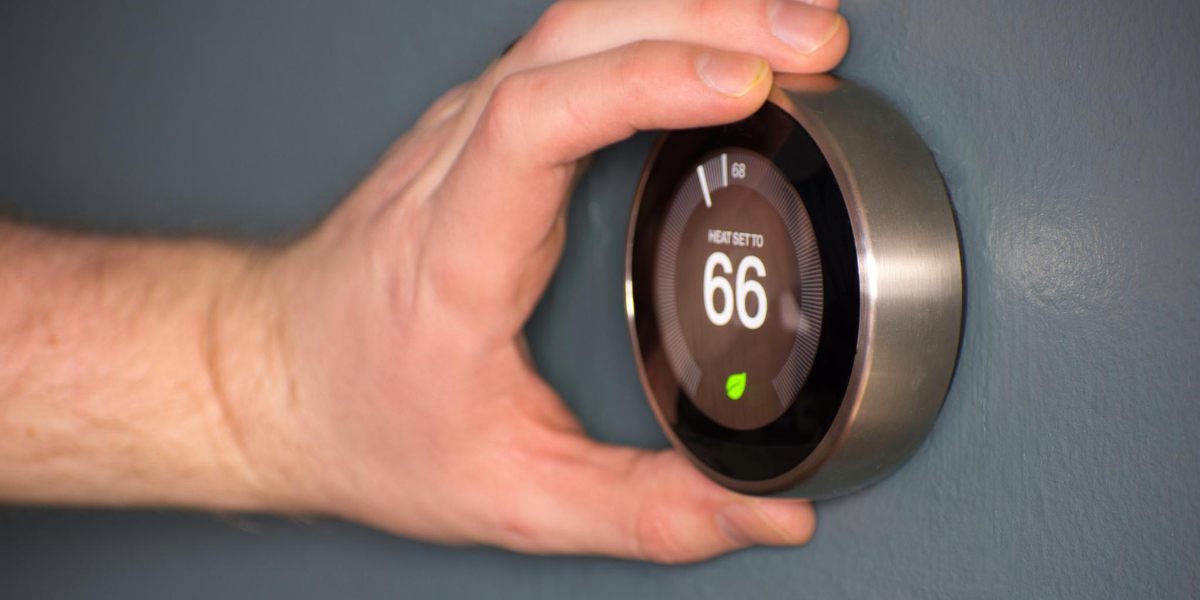
In conclusion, Smart Thermostats play a crucial role in optimizing AC efficiency, reducing energy costs, and promoting eco-friendly living. By embracing this technology, users can enjoy a comfortable indoor environment while contributing to a greener future. Stay informed, stay efficient, and make the switch to smart thermostats today.
Commonly Asked Questions
How do smart thermostats contribute to energy savings?
Smart thermostats optimize temperature settings based on occupancy and usage patterns, reducing unnecessary energy consumption.
What are the connectivity options of smart thermostats with other devices?
Smart thermostats can connect to smartphones, smart speakers, and other smart home devices, allowing for seamless control and automation.
How do smart thermostats help reduce carbon footprint?
By efficiently managing HVAC systems, smart thermostats lower energy usage, resulting in reduced carbon emissions and a smaller environmental footprint.
Are smart thermostats easy to program?
Yes, smart thermostats offer user-friendly interfaces and intuitive scheduling features, making it easy for users to program temperature settings according to their preferences.

